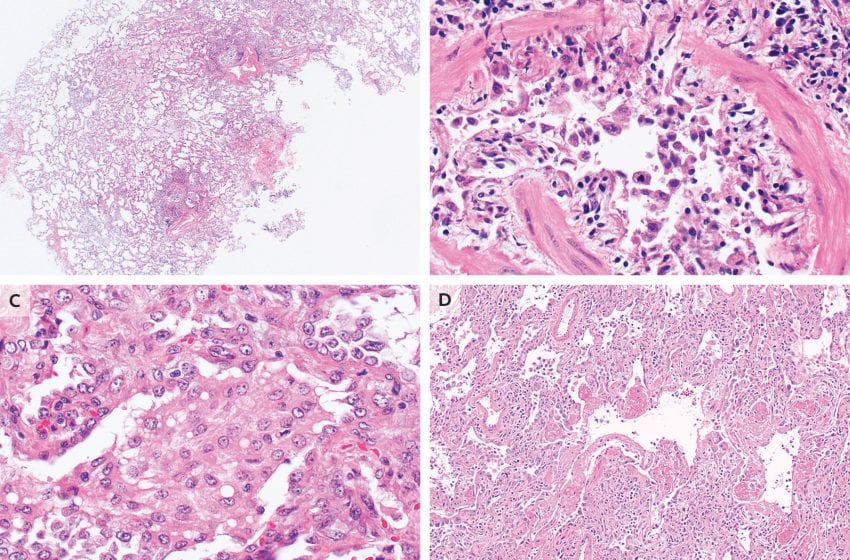Too Little, Too Late
- Also in TR Print Edition
- February 4, 2020
- 0
- 1
- 10 minutes read


Michael B. Siegel reflects on the great vape scare of 2019.
By Stefanie Rossel
Michael B. Siegel is a professor of community health sci- ences at the Boston University School of Public Health. He has 32 years of experience in the field of tobacco control, previously spent two years working at the Office on Smoking and Health at the U.S. Centers for Disease Control and Prevention (CDC), published nearly 70 papers related to tobacco and testified in the landmark Engle lawsuit.
In his tobacco and alcohol news analysis blog, “The Rest of the Story,” Siegel was one of the first to hint at the fact that illegal e-liquids containing tetrahydrocannabinol (THC) are likely to be the true cause of the recent vaping-related illnesses and deaths in the U.S. He has criticized the CDC for its late warning against these vapes and is asking health authorities to stop ignoring “the other youth vaping epidemic”—the vaping of marijuana.
Tobacco Reporter: E-cigarettes have been on sale in the U.S. for more than a decade. How do you explain the sudden proliferation of vaping-related illness?
Michael B. Siegel: The proliferation of vaping-related illness is not being caused by e-cigarettes but by THC-containing vape cartridges. Late in 2018, a new thickening agent began to be used as a diluent for THC concentrate—vitamin E acetate oil. Vitamin E acetate oil is a viscous oil. The vitamin E acetate destroys the surfactant in the lungs, blocking their ability to work properly. In addition, vitamin E acetate when heated can form a toxin that is toxic to the respiratory tract. This explains why there has been a sudden proliferation of this illness.
Why do you think marijuana vaping has become so popular among youth during the past year?
For two reasons. First, because vaping has become so popular. Second, because the legalization of marijuana in many states has led to a decreased perception of harm.
In your blog, you criticized the CDC for waiting two months after the first vaping-related illnesses and deaths before issuing a warning against vaping THC e-liquids. Why do you think the CDC took so long?
I think the CDC had a preexisting bias against e-cigarettes and therefore its thinking was clouded. I also think that the CDC did not do enough to talk to vapers in order to understand the benefits of vaping to so many smokers—and ex-smokers—across the country. I think the CDC wanted to tell the story of how e-cigarettes were causing severe illness and death. When the evidence didn’t fit this story, they were very reluctant to change the story to fit the evidence. It wasn’t until the evidence became too overwhelming to deny that they finally admitted the role of THC vaping. However, they still cling to the faint hope that somehow e-cigarettes are involved in the outbreak.
How has the number of cases developed since the CDC’s official warning? Has the warning been taken seriously?
The number of cases has finally started to wane, not because of any action by the CDC but because of enforcement actions by the Food and Drug Administration, the Drug Enforcement Administration and a number of police departments that have begun to crack down on the illicit production and distribution of THC vape cartridges. Also, excellent reporting by Leafly played a role as they investigated the outbreak and quickly pinned it to vitamin E acetate oil being used as a thickening agent by several large illicit manufacturers in Los Angeles. When these producers became aware, they did discontinue its use. This is why the cases are declining—not because of any effective warnings from [the] CDC. If anything, the vagueness of [the] CDC’s warnings led to more cases of the outbreak than we would have experienced had they simply told the public the truth from the beginning.
Which measures have health authorities taken since they first admitted that the vaping-related illness is linked to THC that is potentially contaminated with vitamin E acetate, and how useful do you think they have been in tackling the problem?
The major action by health authorities in most states has been to warn the public not to vape at all and in some states taking e-cigarettes or at least flavored e-cigarettes off the market. Both of these actions probably made the problem worse not better. To be sure, taking e-cigarettes off the market did nothing to curtail the outbreak because these products were not involved in the first place. However, taking e-cigarettes off the market and hiding the true role of THC vaping probably did lead to more people continuing to vape THC and therefore to more cases of the illness.
Most of the implicated THC e-liquids were illegal products. In your opinion, which immediate and which long-term strategies should be taken to address the problem?
The problem is clearly the fact that there is a large and unregulated market for THC products. The only way to address this effectively is to legalize the use of cannabis but to accompany that with stringent regulations that include [the] testing of all cannabis products for chemicals like pesticides, metals and solvents/diluents such as vitamin E acetate.
In the U.S., we now have the situation that flavored e-liquids except those with tobacco flavor have been banned in some states. Moreover, in early January, the Trump administration announced plans to bar sales of flavored e-cigarette cartridges except for menthol and tobacco flavors. The move will exclude refillable e-liquid flavors and will go into effect within 30 days. In Massachusetts, one of the states that already implemented a ban, vapers have returned to smoking in great numbers, which is an indicator of what the present policy on vaping illness is doing to the entire vape sector.
The outbreak of lung injuries has scared many vapers and prompted authorities to take drastic measures such as the recently announced ban on all cartridge-based flavors except tobacco and menthol. Can the vapor industry recover from this blow?
Unfortunately, I think there are multiple policies that are going to decimate the vape sector. The more existential challenge is that the PMTA [premarket tobacco product application] system is still in place. As of May 2020, all products that have not submitted a PMTA will have to come off the market. The PMTA process is so burdensome and expensive that only the largest companies will be able to afford it.
This will result in the decimation of the industry as only a small number of products have a decent chance of being able to remain on the market, and the vape shop model is simply not going to survive. What is truly needed for the vape sector to survive and continue to thrive is legislation that prevents the FDA from implementing the PMTA process and instead forces the agency to actually promulgate a set of safety standards for these products.
How do you see the future of tobacco harm reduction in the U.S. against this background?
I would like to emphasize that both flavored e-cigarette bans and the PMTA enforcement are going to have the adverse effect of forcing many ex-smokers back to smoking. I see this as a tragic and preventable public health outcome. There are at least 3 million ex-smokers who quit [by] using e-cigarettes. Taking these products off the market makes absolutely no sense. These vapers have accomplished the most difficult task imaginable: quitting smoking. Why punish them by removing the products that enabled them to quit?
Unless we change course, we will have squandered the opportunity for one of the greatest public health miracles in history: the elimination of the combustible tobacco market by transitioning the market over to an array of much safer nicotine-containing products. The industry is ready for it. Smokers and vapers are ready for it. Sadly, the only ones not ready for it are the anti-tobacco groups who have for decades purported that their goal is to [make] smoking history. This is the great irony of the vaping story.

